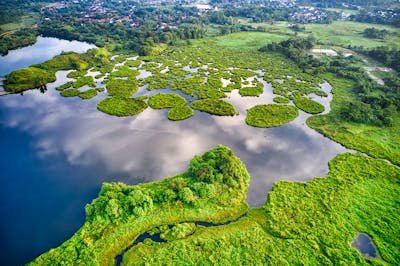Biodiversity refers to the variety of life on Earth, including plants, animals, and microorganisms. It is crucial for the health and stability of ecosystems. When ecosystems are rich in biodiversity, they are better equipped to handle changes, such as climate shifts or human activities. The more diverse an ecosystem is, the more likely it can recover from disturbances. Biodiversity supports all life forms and provides essential services like clean air, water, and food.
Table: Key Benefits of Biodiversity
| Benefit | Description |
|---|---|
| Ecosystem Stability | Helps ecosystems recover from changes or threats |
| Food and Resources | Provides food, medicine, and materials |
| Clean Air and Water | Maintains healthy air and water cycles |
| Climate Regulation | Helps regulate climate by storing carbon |
Biodiversity and Ecosystem Stability
Biodiversity plays a significant role in maintaining the balance of ecosystems. When there are different species present, they interact with each other in ways that keep the system running smoothly. For example, some animals help spread plant seeds, while others control pests. If one species disappears, it can disrupt the whole system. The variety of species acts like a safety net—if one species struggles, another can fill its role. This makes ecosystems more resilient and less likely to collapse.
Providing Food and Resources
Biodiversity is essential for providing humans with food, medicine, and materials. Many crops depend on pollinators like bees and butterflies, which are part of a biodiverse ecosystem. Wild plants are also sources of many medicines, such as aspirin, which comes from willow trees. Additionally, materials like wood and fiber come from various species. Protecting biodiversity ensures that we continue to have access to these valuable resources, which are crucial for our survival.
Biodiversity and Climate Regulation
Biodiversity helps regulate the Earth’s climate. Forests, wetlands, and oceans act as carbon sinks, meaning they absorb and store carbon dioxide from the atmosphere. This helps reduce the amount of greenhouse gases that contribute to global warming. Plants and trees are also essential in maintaining healthy air by absorbing carbon and releasing oxygen. By protecting biodiversity, we can help slow down climate change and keep the planet’s ecosystems in balance.
Maintaining Clean Air and Water
Healthy ecosystems rely on biodiversity to maintain clean air and water. Plants and trees filter pollutants from the air, making it safe for humans and animals to breathe. Wetlands and forests play a key role in filtering water, removing toxins and ensuring clean drinking water for people and wildlife. Without biodiversity, these natural systems would break down, leading to polluted air and water that would affect all life on Earth.
Threats to Biodiversity
There are several major threats to biodiversity, including habitat destruction, pollution, climate change, and over-exploitation of resources. Human activities like deforestation, industrial waste, and excessive hunting or fishing are putting pressure on ecosystems. When biodiversity is reduced, ecosystems become weaker and more vulnerable to diseases, pests, and environmental changes. Protecting biodiversity is vital for the health of the planet and its ability to provide the resources we need to live.
Conclusion: Protecting Biodiversity for the Future
Biodiversity is essential for the health and stability of ecosystems, providing us with food, clean air, and water, and helping to regulate the climate. The variety of species in an ecosystem ensures that it can recover from disturbances and continue to function properly. However, human activities are putting biodiversity at risk. Protecting and preserving biodiversity is crucial for ensuring a sustainable future, not only for humans but for all living creatures on Earth.



